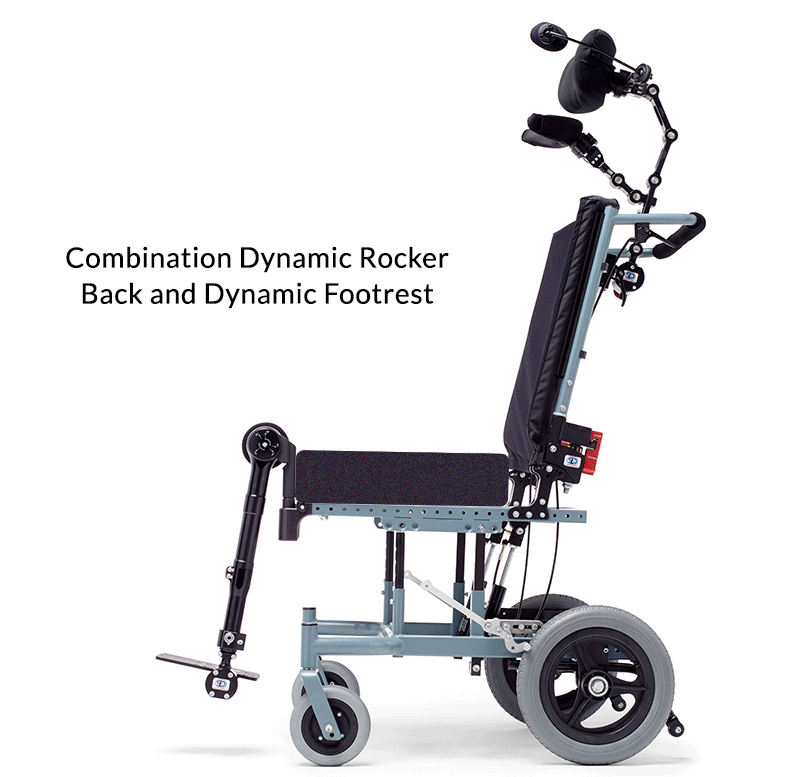Using Multiple Dynamic Seating Components on a Wheelchair
Michelle L. Lange, OTR/L, ATP/SMS
Dynamic Seating components are often used at the hips (dynamic backs), knees (dynamic footrests) and the neck (dynamic head support hardware). Dynamic components can be used individually, however combining these components can often maximize the impact Dynamic Seating can make and better meet the client’s needs.


Heading Off Extension
Many clients with increased muscle tone demonstrate a pattern of extension at the knees, hips, and neck. Now, if you were to swing the footrest hangers out of the way - eliminating leverage under the feet - the client would most likely demonstrate a significant decrease in their overall extensor pattern. Dynamic Footrests provide support for the feet, but also move in response to extension, removing quite a bit of this leverage and reducing overall tone.
This same client may continue to find leverage under the thighs, despite the movement of the Dynamic Footrests. By adding a Dynamic Back (such as the Dynamic Rocker Back Interface or DRBi), movement into hip extension is allowed, diffusing force and further decreasing extension throughout the body. The DRBi and Dynamic Footrests are frequently used together. If the DRBi is locked out, such as in transit, the Dynamic Footrests continue to absorb and diffuse extensor forces.
Finally, some clients using Dynamic Footrests and a Dynamic Back may continue to extend with force at the neck, pushing back on the head support. This force will most likely be reduced by use of the other Dynamic components but may still be present to a lesser degree. By adding Dynamic Head Support Hardware, this final area of the extensor pattern can be addressed.
Providing Movement
Other wheelchair users may or may not exhibit increased muscle tone but do seek out movement. This is often demonstrated as a rocking movement. Dynamic Backs are often used to allow for this rocking movement, however the user may also be moving at the knees and/or the head. Watch the client carefully to determine if movement is also occurring in these other areas and, if so, consider combining dynamic components.
When is Combining Multiple Components Contra-Indicated?
Some clients who use multiple dynamic components may experience a lack of stability. If this is the case, try only using a dynamic component at the location the client most needs it. Another option would be to increase the resistance of each component to allow movement but against sufficient resistance to increase stability.
Are you combining Dynamic Seating components? We’d love to hear from you! Please leave us a comment below!
Watch how these combined Dynamic Seating Components work together.

Updated 2/12/2024
